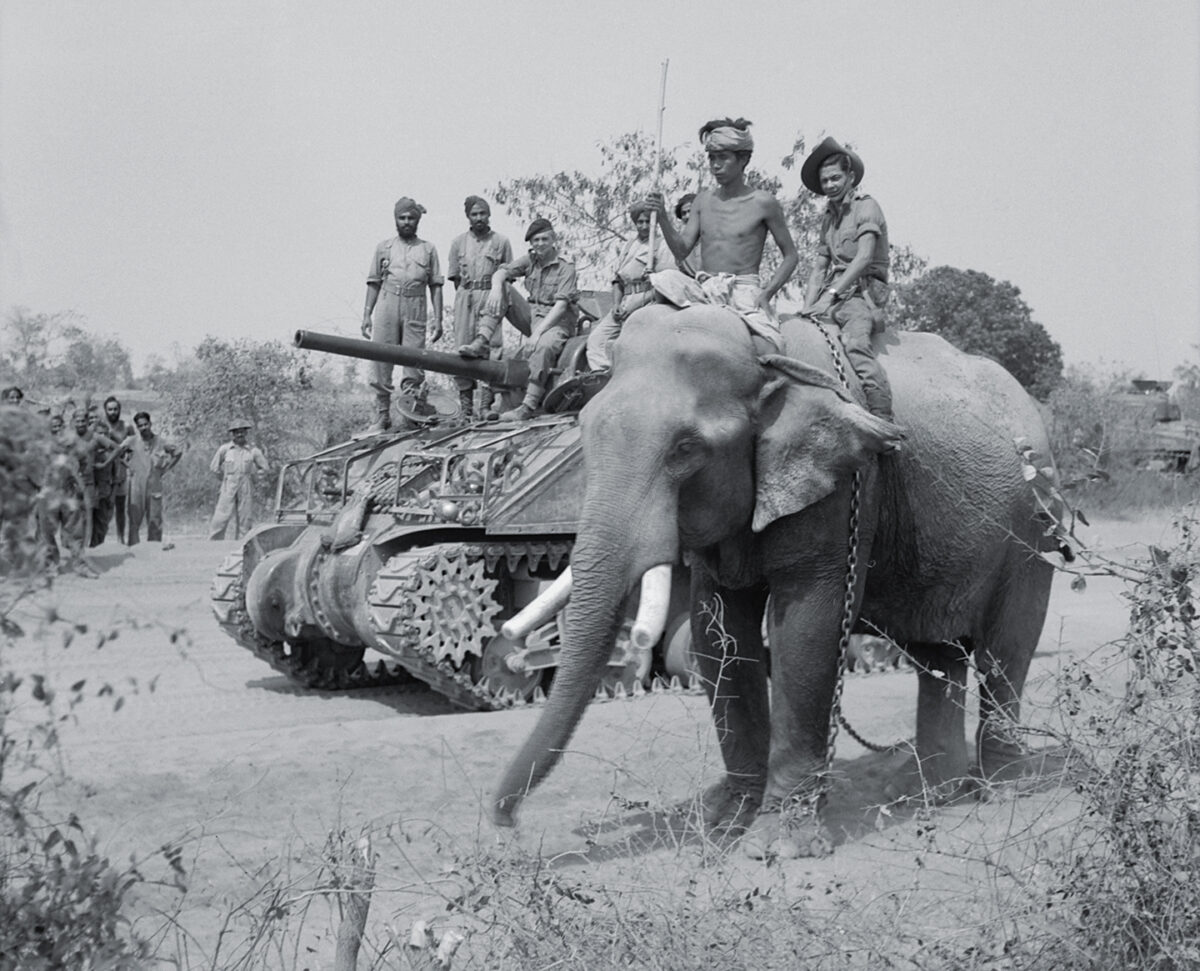The horse may have been history’s most common wartime mount, but the elephant was by far the most terrifying. The largest bull Asian elephants can exceed 10 feet at the shoulder and weigh over 10,000 pounds, dwarfing any other cavalry on the premodern battlefield. The elephant also demonstrated a knack for negotiating uneven or unpredictable terrain, particularly in the dense forests and marshes of South and Southeast Asia.
The elephant remained central in Asian warfare for thousands of years, from the wars of Alexander the Great to the Burma Campaign of World War II. In 1950, British Field Marshal Sir William Slim recalled the vital role elephants played during the British occupation of Burma: “To watch an elephant building a bridge, to see the skill with which the great beast lifted the huge logs and the accuracy with which they were coaxed into position, was to realize that the trained elephant was no mere transport animal, but indeed a skilled sapper.…It is the elephant’s dignity and intelligence that gained our real respect.”
Yet, despite its size and strength, fear appears to have been a primary weakness of the elephant as a war animal. Legend has it that when Alexander fought King Porus of India, he was able to spook the latter’s war elephants with the squealing of pigs. Similarly, though elephants appeared able to shrug off small-arms fire, the British army discovered amid the Sepoy Rebellion that the leviathans were prone to panic or stampede at the mere sound of guns or explosives.
While the size and spectacle of the elephant were undeniable, the horse simply proved more reliable when a soldier needed it most.





